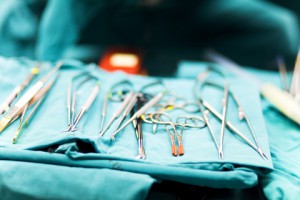Common Surgical Procedures – Recovery Times and Associated Issues for Consideration

Figure 5 and 6 highlight the salient points provided by the 3 major websites (listed previously in Figure 1), on recovery from common surgical procedures.The theory surrounding worklessness and health/ill-health outlined above, applies to patients recovering from surgical procedures.It is no longer advisable to recommend prolonged recovery time off work, as this can lead to significant deconditioning, making it harder for the patient to settle back into normal work and may even lead to unemployment. The recovery times given generally represent maximum times likely to be needed as many patients will be safe to return to work sooner. The main provisos8 to this are:
Differing surgical techniques
Surgical techniques do differ, so individual surgeons may recommend slightly different times off work.
Significant complications
Patients would only be expected to take longer to recover than the times recommended in Figure 6 below, if there are significant complications with the procedure. Early wound infection treated promptly with antibiotics is unlikely to delay return to work. A complication such as wound dehiscence is likely to delay return.
Patient’s motivation
Patients who are motivated to adhere to a comprehensive rehabilitation programme would be expected to return earlier. Patients do not need to wait until they are symptom free and 100% fit before resuming work. This is particularly the case for jobs involving mainly office work. They should be informed that some initial discomfort is to be expected.
Physical fitness prior to/following surgery
Physical fitness plays a major role in the speed of recovery after surgery, and resting for too long can result in substantial physical deconditioning coupled with weight gain. Patients who feel unable to return to work should still be encouraged to exercise daily to improve their fitness and avoid gaining weight. Walking is safe after most surgical procedures, and for those unsure of how much to walk, buying a cheap pedometer will help them monitor their activity and their recovery.
Referrals to Occupational Health
If unsure of the level of risk involved in returning to work, and/or the nature of the patient’s work, the ‘Fitnote’6 can be used to recommend that the employer make a referral to Occupational Health (where available).
| Driving |
|---|
|
Some patients will be required to undertake driving as a small, substantial or total part of their job. These patient should inform their insurance company about their operation before driving. Patients should not drive for 24 hours after a general anaesthetic and until the sedative effects of pain relief have worn off. Some companies will not insure drivers for a number of weeks after surgery, so it’s important that the patient checks what their policy says. The patient should be comfortable in the driving position and before driving a patient should be:
Patients should practice the basic movements needed to drive safely. They should do this in a safe place without putting the key in the ignition. It is advisable not to restart driving with a long journey. |
Advice on Travelling
Some patients are required to travel long distances or abroad for business purposes. The patient should consider their comfort levels if they are required to wear a seat belt. If the patient is travelling soon after their operation, the risk of deep vein thrombosis (DVT) should be considered, for journeys of more than 4 hours duration. If travelling abroad, the patient should consider whether they would have access to appropriate medical care, if they were to experience any post-operative complications. The patient should ensure that they have appropriate travel insurance to cover necessary medical care.

